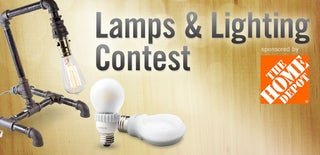Introduction: LED Light Wall | Energy Consumption Display
Carnegie Mellon University competed in the 2005 Solar Decathlon. While the results of the competition were over and done nearly a decade ago, the house lives on the campus and serves as a living experiment for students.
As part of a team of 3, I created an interactive light wall out of tri-color LEDs that read the energy consumption of the house in real time and changed the color of the wall from a calm, ambient blue to a bright red that angrily blinked at the user until the usage decreased. Subtle at first, but certainly a form of green design that can't be ignored.
I'm realizing as I type this now that this project was likely inspired by the Jetsons :-)
We wanted to wire up the entire wall behind the counter of the kitchen but this proved to be too many LEDs for the three of us to solder in the time we had. As such, I offer this as a concept and encourage you to think about other physical forms this project might take and also other ways you can surface information about energy consumption to make people in a space more aware of their impact. I'll try to outline enough of our learnings to enable you to build your own LED information display with tri-color LEDs.
Step 1: Gather Your Supplies
Tri-color LEDs are magical. Not only do they display the red, green, and blue colors but they can display any color in between and fade or phase between them smoothly. This means your colors can express more subtlety than just 3 values and you can adjust intensity to affect more about the environment.
TIP! You'll see the soldering behind the light wall in the next step but I'll say this upfront: you will thank yourself later if you use different color coated wires to solder the different color pins.
Gather the following supplies:
- Tri-color LEDs
- A wooden board for structure (we used MDF and plywood - this is invisible at the end anyway)
- An arduino
- Coated wires (in at least 4 colors)
- Diffusion material (translucent plastic)
- Electrical tape
- Soldering iron & solder
- Breadboard
Step 2: Experiment With Code
The Arduino community is a great one and very fond of sharing open.
Even if I shared the exact code we used, it wouldn't be plug'n'play for someone else. The tutorials posted on their site are a great place to start if you're new to Arduinos and microcontrolers and even if you're not new, it'll get you up and running faster.
Here's example code you can try to start experimenting with dimming tri-color LEDs. You'll need an Arduino and a few basic supplies to start your experiments.
The only component missing from this example is the input sensor. We were able to tap into the house's real-time data stream of the energy being consumed by the house, but you could use this to display any type of information or use whatever sensor you like.
Step 3: Construct Your Light Wall
Once the code words and the basics of your LED construction is known, it's time to give the project form.
In our case, we removed the translucent plastic board from behind the kitchen counter and ran experiments to see how focused the lights were and how to best diffuse the light from the LEDs. We tried various things (ping pong balls cut in half and placed over the light, aluminum foil to add reflection, etc.) but eventually just used the spacing between the light and the plastic to help disperse the light the way we wanted.
Next, we used the MDF as a support structure and drilled small holes only the diameter of the LED cap into the board and pushed the LED through.
Then, solder, solder, solder.
Any photos I have look like a rats nest, but this diagram does a good job of explaining how to wire up tri color LEDs.
Tape the LEDs to hold them in place and keep your wiring clean to avoid insanity later on.
Step 4: Tweak With Real Data
Showing energy consumption in the house required installing this and exploring the threshold we could reasonably expect. We read the output with as little running in the house as possible and then turned on everything we could to find the upper level and set benchmarks at appropriate levels in between. It made for a compelling demo which we were able to show by just using various appliances in the house.

Participated in the
Green Design Contest

Participated in the
Sensors Contest

Participated in the
Gadget Hacking and Accessories Contest

Participated in the
Lamps and Lighting





![Raised Bed Garden [for Those With Only Hand Tools!]](https://content.instructables.com/F2Q/UUXE/JUQSKGLC/F2QUUXEJUQSKGLC.jpg?auto=webp&crop=1%3A1&frame=1&width=130)







